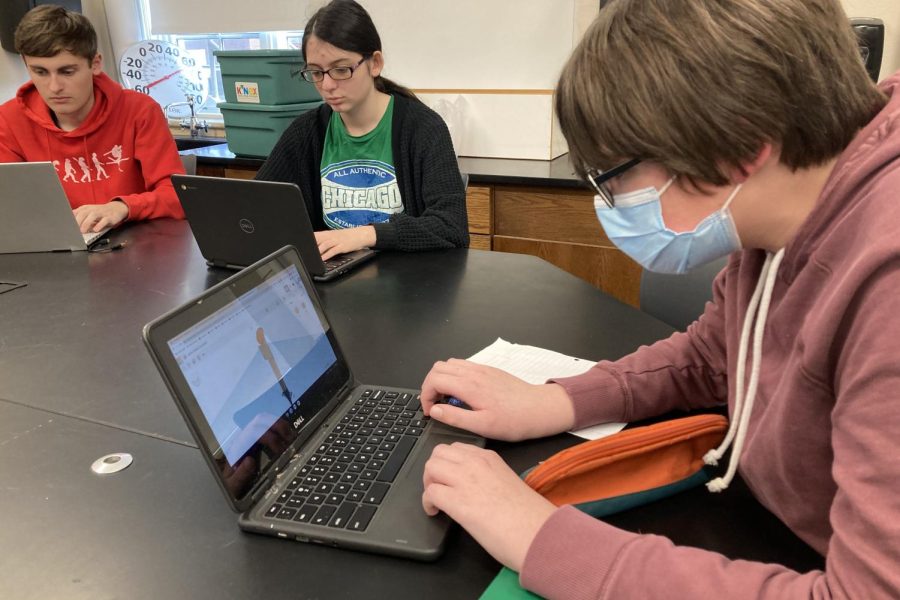New Astronomy Club to Design Solar System Scale Model
Kaden Huntley ’25 and other members of Astronomy Club work together to design their solar system scale model.
May 26, 2023
As a five-year-old, Kaden Huntley ’25 was so fascinated by space that he gave a report on black holes for the Willowwind School Talent Show. Now, the sophomore is the founder of the new Astronomy Club, which has embarked upon a project to make a scale model of the solar system on the City High lawn.
Members of the Astronomy Club hope the scale model will give students an idea of the vastness of the universe.
“We want to educate the community,” Huntley said. “Space is so much bigger than all of us. It’s the biggest thing. When you look up there, you realize how small you are. No matter what happens to humans, or what happens to you, nothing is really going to change up there.”
Huntley was inspired by the scale model of the solar system in Mount Vernon. An astronomer located the Sun at Cornell College. Different planets are marked at local buildings and signs, with the dwarf planet, Pluto, positioned approximately five miles away.
City High Principal John Bacon provided the Astronomy Club with a $500 budget for purchasing materials. The Club received a lumber donation from Gilcrest Jewett, and it is also collaborating with woodshop and art classes. The Club plans to finish the proof of concept this spring and begin the real scale model next year.
Huntley organized the club this year, inspired by his long-standing interest in outer space.
“I’ve always liked outer space,” Huntley said. “Humans have not completely conquered Earth, but we’re pretty close to getting there. So, space is the new thing. It’s similar to how old explorers would use boats and go around the world, but now we’re using spaceships and going to other planets and discovering all these cool things about our solar system and universe.”
“At first, I thought [the Club] was going to be a very easy thing to do,” Huntley said. “Not easy, exactly, but I thought in terms of the teaching side of things, I’d just come up with a slideshow and present that. But I’ve learned it was much more complex than that. I think it’s better to be a lot more interactive.”
Amelia Wolfe ’25, said that in Astronomy Club, there are more group activities than in the average club. She described the Astronomy Club as “Surprisingly fun. Most of the other clubs that I’ve been in aren’t doing big projects like this. So it’s a cool club. The people that come to this club are also really nice.”
Wolfe emphasized the importance of group members’ feedback and input into the club. “[Our project] takes a lot more work than one might expect,” Wolfe said. “So it’s necessary to contribute ideas and feedback and stuff. And just putting in your opinions and contributing to the club itself.”
Huntley said since starting the club this year, he has learned a lot about the processes behind long-term projects, and about how hard it is to be a teacher.

































